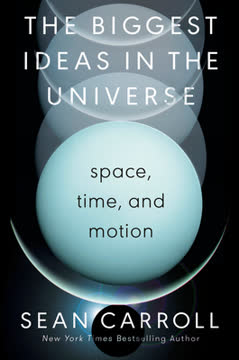Key Takeaways
1. Energy Conversion Powers Our Technological World
Energy makes things happen—from the smallest pulse of electricity to a blast of explosives.
Energy transformation. Technology fundamentally relies on converting energy from one form to another, such as chemical energy in fuel becoming heat and then kinetic energy in an engine. Power is the rate at which this conversion occurs, measured in units like watts or horsepower. While energy is conserved, conversion processes inevitably result in some energy being wasted, often as heat.
Measuring power. Different technologies measure power based on production or consumption. Power stations generate megawatts, appliances consume watts, and car engines are rated in horsepower. Understanding these units helps quantify the energy demands and outputs of various machines.
Fossil fuel reliance. A significant portion of global energy, particularly for electricity and transportation, still comes from burning fossil fuels. This process converts stored chemical energy into heat but also releases greenhouse gases, highlighting the environmental impact of our current energy technologies.
2. Harnessing Natural Forces Provides Sustainable Energy
The energy in moving water and the heat in Earth’s crust can be harnessed to produce electricity.
Renewable sources. Technologies like hydroelectric, wind, solar, and geothermal power tap into natural, replenishable energy flows. Hydroelectric dams use falling water to spin turbines, while wind turbines capture kinetic energy from air movement. Solar panels convert sunlight directly into electricity using photovoltaic cells.
Geothermal heat. Geothermal power utilizes heat from within the Earth's crust to generate steam, which drives turbines. These renewable methods offer cleaner alternatives to fossil fuels, producing significantly fewer harmful emissions.
Infrastructure investment. While sustainable, harnessing these natural forces often requires substantial initial investment in infrastructure, such as large dams, extensive wind farms, or deep drilling for geothermal energy. Despite the costs, they represent crucial technologies for a less carbon-intensive future.
3. Transportation Overcomes Forces to Move People and Goods
A vehicle moves when it is acted on by one or more forces.
Balancing forces. Transportation technologies are designed to manage fundamental physical forces like gravity, lift, thrust, and drag. Vehicles generate thrust to move forward, while lift counteracts gravity for flight, and drag and friction oppose motion. Efficient design minimizes drag and friction to improve speed and fuel efficiency.
Engine power. Most vehicles use engines that exploit the principle of gas expansion when heated, converting chemical energy from fuel into kinetic energy. Internal combustion engines burn fuel internally to push pistons or create jets, while electric motors use magnetic fields to generate rotational movement.
Controlling motion. Steering systems, often using levers and gears, allow vehicles to change direction, while braking systems use friction or regenerative processes to slow them down. These control mechanisms are essential for safe and effective movement across land, sea, and air.
4. Materials Science Creates Tailored Building Blocks
A composite material comprises two or more materials that, when combined, have superior qualities to the originals.
Engineered properties. Materials science focuses on understanding and manipulating the properties of substances to create materials suited for specific technological applications. Metals, for instance, are strong and conductive but often alloyed to improve hardness or corrosion resistance. Plastics, derived from polymers, offer versatility and ease of manufacture.
Advanced composites. Composites combine different materials, like fibers and resins, to achieve properties superior to their components, such as high strength-to-weight ratios in carbon fiber polymers. Nanotechnology explores materials at the atomic scale, creating nanoparticles, nanotubes, and graphene with unique properties for diverse uses, from electronics to medicine.
Shaping materials. Working with materials involves processes like casting, forging, extruding, and rolling for metals, often using heat (hot working) or mechanical stress (cold working). Joining methods like soldering, welding, and riveting are crucial for assembling components into finished products.
5. Construction Leverages Material Properties for Structures
For many traditionally constructed buildings, arches and domes are commonly used to span openings and big spaces, because they enable a large area to be covered with the least amount of supporting structure.
Structural principles. Construction technology applies principles of physics and material science to build stable structures. Arches and domes are efficient forms that transfer downward loads outward, utilizing the compressive strength of materials like stone or concrete to span wide openings with minimal support.
Concrete and reinforcement. Concrete, a composite of cement, water, and aggregate, is strong under compression but weak under tension. Reinforcing it with steel bars (rebars) or prestressing significantly increases its tensile strength, making it suitable for large beams and structures.
Modern techniques. Building techniques range from simple cut-and-cover tunnels to complex bored tunnels using tunnel boring machines. Skyscrapers employ steel frames or reinforced concrete cores to support immense weight and resist wind forces, relying on deep foundations and advanced elevator systems for vertical transport.
6. Home Technology Automates Daily Life and Utilities
Most utilities tend to feature an external or main supply, such as a pipeline carrying natural gas or water, which enters the home and is then distributed around the property.
Essential services. Homes rely on networks that deliver essential utilities like water, electricity, and gas, distributed internally through pipes and wiring. Heating systems, whether central heating or hot-air systems, regulate indoor temperatures using boilers, furnaces, or heat exchangers controlled by thermostats.
Automated appliances. Kitchen and cleaning tasks are automated by appliances like microwaves (using radio waves to heat food), kettles/toasters (using heating elements), dishwashers (using pressurized water and detergent), refrigerators (using refrigerant cycles to transfer heat), and vacuum cleaners (using suction and filtration).
Digital integration. The rise of digital technology enables the "smart home," where devices like smart speakers, thermostats, and locks are connected and controlled remotely, often via smartphone apps. Digital assistants use voice recognition and Internet connectivity to manage tasks and provide information.
7. Digital Systems Process Information as Binary Code
Inside a digital device, information is stored and processed as numbers.
Binary foundation. All digital technology, from computers to smartphones, represents information—text, images, sound, software—using binary numbers (bits), which are either 0 or 1. These binary digits are physically represented by electrical states, such as current being on or off.
Computer architecture. Computers consist of hardware components like the central processing unit (CPU), memory (RAM), and storage (hard disks, flash drives), all interconnected by buses. The CPU executes instructions from programs, processing binary data retrieved from memory.
Integrated circuits. The core of digital processing lies in integrated circuits (ICs or chips), which contain billions of tiny transistors etched onto semiconductor material like silicon. Transistors act as switches, controlling the flow of electric current to represent and manipulate binary digits.
8. Waves Enable Communication and Sensing Across Distances
Many technologies work with waves: microphones detect sound waves, while loudspeakers produce them; cameras detect light waves, while projectors produce them; and telecommunications use radio, light, and infrared waves to send and receive signals.
Types of waves. Technology utilizes various types of waves, including sound waves (longitudinal pressure variations) and electromagnetic waves (transverse variations in electric and magnetic fields). The electromagnetic spectrum encompasses radio waves, microwaves, visible light, X-rays, and more, differing in frequency and wavelength.
Signal transmission. Communication technologies encode information into waves through modulation, altering properties like amplitude or frequency. Radio signals are transmitted via antennas and travel as ground waves, sky waves (reflecting off the ionosphere), or line-of-sight waves.
Sensing and display. Cameras capture images by detecting light waves on a sensor, while projectors reproduce images by emitting light. Radar uses reflected radio waves to detect objects, and technologies like LiDAR use laser pulses for sensing and mapping.
9. Automation and Robotics Transform Industries and Tasks
A robot is a computer-controlled machine that can do a range of tasks with little or no human intervention.
Automated action. Robots are machines controlled by computers, designed to perform tasks autonomously or semi-autonomously. They use actuators, often stepper motors, for precise movement and manipulation, and sensors to perceive their environment.
Industrial applications. Robotics is widely used in manufacturing for repetitive tasks like welding and assembly, increasing efficiency and precision. In farming, automation includes large combine harvesters and increasingly, robotic pickers for delicate crops.
Exploration and service. Robots are deployed in hazardous environments, such as space exploration (like the Mars rovers) or disaster relief. Service robots are becoming more common in homes (e.g., vacuum cleaners) and potentially for deliveries.
10. Technology Enhances Human Health and Capabilities
A pacemaker is a battery-powered device implanted in the chest that corrects heartbeat abnormalities by sending electrical impulses to the heart.
Medical imaging. Technology provides powerful tools for diagnosing and treating medical conditions. Imaging techniques like X-rays, CT scans, and MRI allow doctors to visualize internal body structures and identify abnormalities.
Advanced surgery. Keyhole surgery enables less invasive procedures through small incisions, often using endoscopes and specialized instruments. Robot-assisted surgery further enhances precision and control for complex operations.
Prosthetics and implants. Technology restores function to missing limbs with advanced prosthetics, including myoelectric limbs controlled by muscle signals and those incorporating touch sensors. Implantable devices like pacemakers regulate vital bodily functions, directly improving health outcomes.
11. Precision and Control Define Modern Technological Applications
Precision agriculture enables farmers to use data from various sources, from sensors in a field to drones and satellites, to improve crop yields and reduce waste.
Data-driven optimization. Modern technology emphasizes precision and control across various fields. Precision agriculture uses sensors, GPS, and data analysis to tailor farming practices, applying resources like water and fertilizer only where needed, optimizing yields and minimizing environmental impact.
Automated control systems. Control systems are embedded in many technologies, from thermostats regulating home heating to flight controllers stabilizing drones and navigation systems guiding vehicles. These systems use sensors to gather data and algorithms to make adjustments, ensuring desired performance.
Digital accuracy. Digital technology allows for unprecedented levels of accuracy in manufacturing (like 3-D printing), medical procedures (like robot-assisted surgery), and scientific measurement. Information represented as discrete binary numbers can be processed and manipulated with high fidelity.
12. Sustainability is Key to Future Resource Management
Recycling is the process of collecting waste items and breaking them down into materials that can be turned into new products.
Resource recovery. Technologies for sustainability focus on managing resources and minimizing environmental harm. Recycling processes sort and reprocess waste materials like paper, glass, metals, and plastics into new products, reducing the need for virgin resources and decreasing landfill waste.
Bioenergy solutions. Bioenergy utilizes organic matter (biomass) as a renewable fuel source, either by direct burning or converting waste into biofuels or biogas through processes like anaerobic digestion. This offers an alternative to fossil fuels, although scaling it can raise concerns about land use.
Cleaner technologies. Developing less polluting technologies, such as electric and hybrid cars, nuclear power, and renewable energy sources, is crucial for reducing greenhouse gas emissions and mitigating climate change. These technologies aim to provide the energy and services we need with a lower environmental footprint.
Last updated:
Review Summary
How Technology Works receives high praise from readers for its comprehensive and visually appealing explanations of various technologies. Reviewers appreciate the book's ability to break down complex concepts into understandable terms, covering a wide range of topics from power and transportation to medical technology. The visual illustrations are particularly lauded for enhancing comprehension. Many readers find it an excellent resource for both adults and children curious about how things function, with some describing it as one of the best explanatory books available.
Similar Books










Download PDF
Download EPUB
.epub digital book format is ideal for reading ebooks on phones, tablets, and e-readers.









